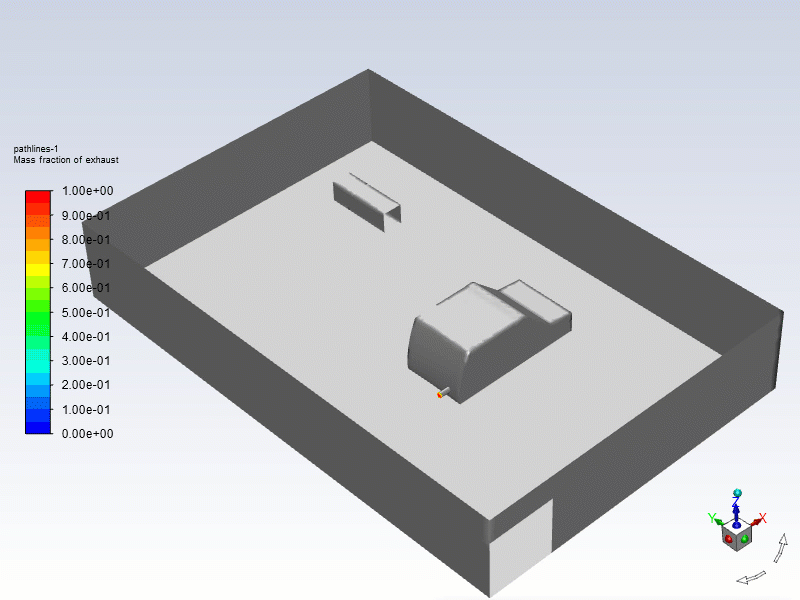Simulation Example - Propagation of Car Exhaust Gas in a Ventilated Garage
Overview
Ventilation units are widely used in many environments where hazardous gases exist, such as closed parking garages. Ventilation systems in parking garages usually induce negative pressure inside the ventilated area by venting the air–exhaust mixture outside. It is then replaced by ambient air driven into the garage through its openings by the pressure difference.
In this specific case, a ventilation unit is installed in a closed garage with one door open to the surroundings. A car is parked in the garage with its engine on, and its exhaust is released into the garage at a constant mass flow rate and high temperature. The air outside the garage is at room temperature and atmospheric pressure. Ambient air sucked into the garage through the open door by the ventilation effect dilutes the exhaust inside; this diluted mixture is then vented out by the ventilation system. The heat exchange between the garage and the surrounding is negligible due to the thickness and insulation of the garage wall.

Objectives
The primary objective of this simulation example is to model the propagation of the exhaust gas inside a ventilated garage and predict exhaust concentrations. You will also learn different visualization techniques in Ansys Fluent.
Setup
Download the Mesh file needed for setting up the simulation and the associated Case & Data files here. Follow the instructions below to set up this simulation in Ansys Fluent starting with a Mesh file. In case you face any issues setting up or running the simulation, please refer to the corresponding initial and final Case and Data files.
Results and Discussion
Let us now analyze the simulation results and understand the physics of exhaust gas propagation in the ventilated garage.

